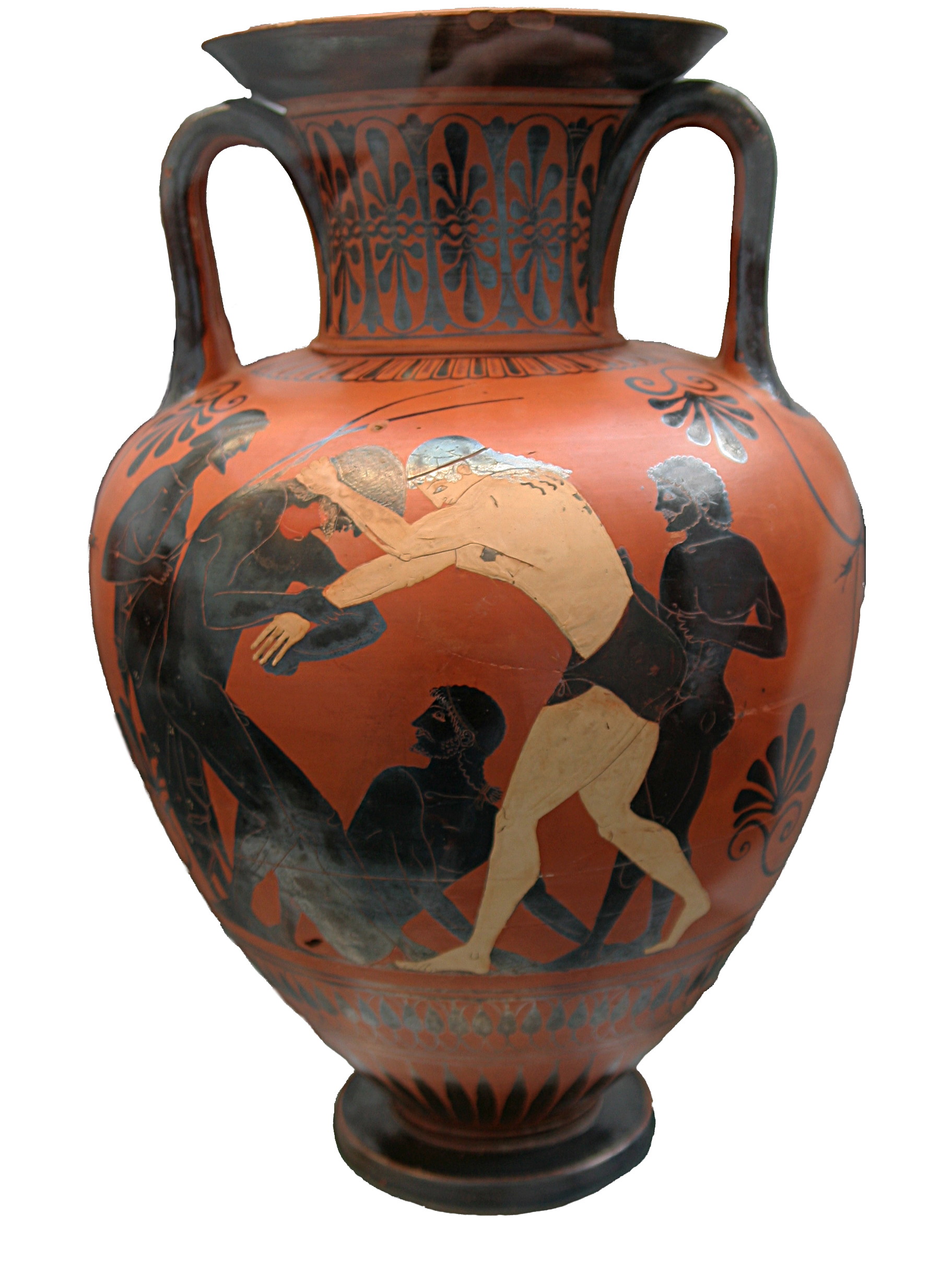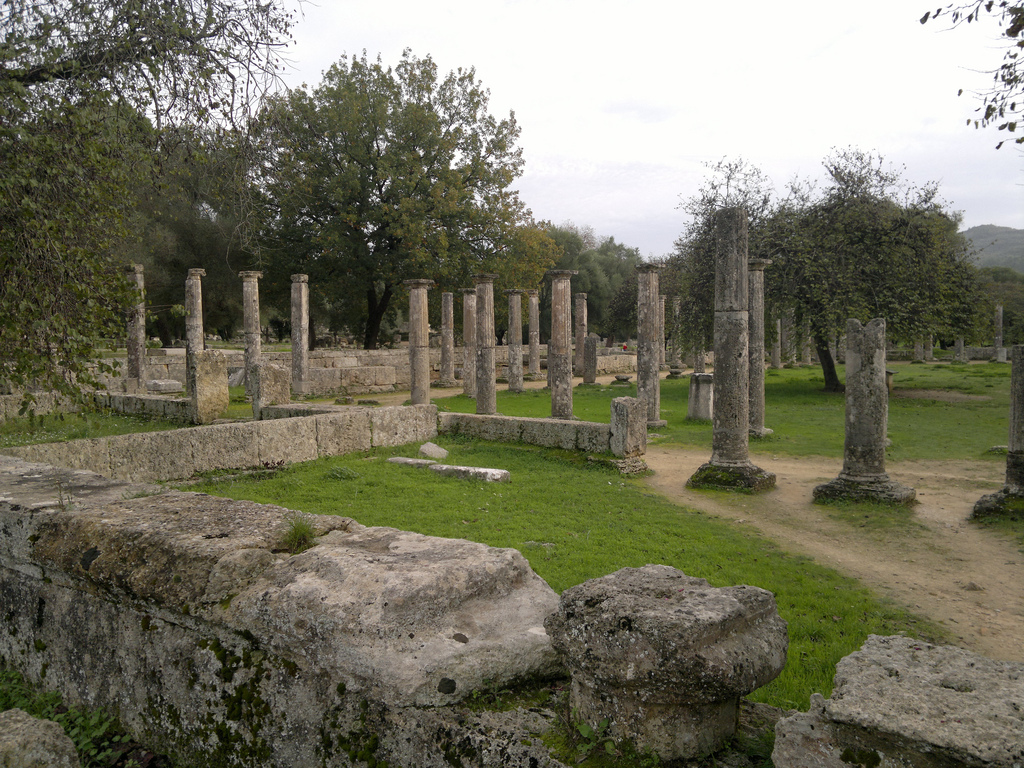Year: 1º E.S.O.
Time required: one session of 50 minutes.
This activity has been designed in order
to introduce one of the key aspects of Greek civilization to the students of 1º ESO. By means of a text and the
subsequent set of activities related to it, the students will learn about Greek
culture in general and about Greek religion in particular. The text deals with the festivals organised in
Olympia in honour of Zeus and it provides information about the development of
the Olympic Games. It acts as a starting point in order to make different
activities and thus widen their knowledge about the Greek world as it is
required in the 1º E.S.O. curriculum
according to regional government decree 86/2015, 25 June and LOMCE.
THE OLYMPIC GAMES
The Pan-Hellenic sanctuary of Olympia,
situated in Greece on the Peloponnese peninsula, was a sacred place for all
the Greeks. It was a meeting place for religious activities in honour of
Zeus. At the centre of the sacred area rose the majestic temple of Zeus,
where a gigantic ivory and gold statue of the god was venerated. Sports
competitions took place every four years on the site, too.
Athletes and spectators from the entire
Greek world met at Olympia to participate and attend the Olympic Games. Before
the Games, a sacred truce (Ekecheiria)
was proclaimed and wars were halted before, during and after the Games, so
that pilgrims, athletes and spectators were able to travel y total safety.
The first day, the Olympic Games started with a procession that brought a lot
of animals along to the altar in order to sacrifice them. The athletes took
an oath to respect the rules of the games. Then, for five days, the events
followed one another: chariot and horse races, pentathlon (five events),
running, wrestling, boxing...
There were several buildings used for
events, as the Palaestra, where
combat sports (boxing, wrestling) and long jump were held, the Gymnasium, where discus and javelin
throw events were carried out, the Stadium,
for the race in arms or naked, and the Hippodrome
for chariot racing and mounted horse race.
There were three main criteria for
participating in the ancient Olympic Games as an athlete: to be a male, of
Greek origin and freeborn. Women, slaves and foreigners were excluded.
The last day of the Games, winners
received an olive wreath and a banquet for the judges and the athletes closed
the festival.
There were other Pan-Hellenic
sanctuaries where sports or music competitions were organised: Corinthia,
Delphi and Nemea, but the Olympic Games were the most important and
prestigious in Antiquity and the ones that have given birth to the modern
Olympic Games.
|
a. Choose the
right option:
1. A sanctuary for all the Greeks is called:
□ an acropolis
□ a Pan-Hellenic sanctuary
□ a temple
1
2. At
Olympia, Greek people could:
□ participate in a procession in honour of
Athena
□ take part in the Games in honour of Zeus
□ consult Apollo’s oracle
3. Athletes could not be:
□
men
□
freeborn
□
slaves
4. What is the name of the region in Greece
where the sanctuary of Olympia is situated?
□
Isthmia
□
Ionia
□
Peloponnese
b. Women were not permitted to participate in the Olympic Games as
athletes. What is your opinion about that? What other differences can you see
between the Olympic Games in the Antiquity and the Olympic Games as they are
held nowadays?
c. Look at these photographs.
Which sports event is represented in each of these Greek vases?
 |
| ___________________ |
 |
| ___________________ |
 |
| __________________ |
 |
| _____________________ |
 |
| _____________________ |
 |
| ______________________ |
d. Classify the sports in the
chart according to the place where each event is held.
PALAESTRA
|
GYMNASIUM
|
STADIUM
|
HIPPODROME
|
e. Working in groups of 3 people, search for the
answer to the following questions on these web pages:
-
What 5 events composed the Pentathlon?
-
What did the athletes wore and
carried during the race in arms?
-
What was the Pankatrion?
-
What was the prize in each of the
other Pan-Hellenic Games?
SITE
|
PRIZE
|
OLYMPIA
|
Wild olive leaf crown = olive
wreath
|
DELPHI
|
|
NEMEA
|
|
CORINTHIA
|
Is the sanctuary of Olympia well-preserved or is it in ruins nowadays?
f.
Look at this photograph of Olympia stadium: at the bottom, there was the
entrance tunnel for the athletes, on the right the judges’ stand was placed, on
the left there were the terraces for spectators and in the foreground you can
see the finishing line. Draw the Olympia stadium as you can imagine that it was
during the Olympic Games more than 2,000 years ago.
g.
Imagine you are an athlete who takes part in the ancient Olympic Games.
Choose your name, the polis where you come from, the year you are in and the
sport you practice. Describe your week in the Olympic Games (procession,
sacrifice, events, reward and banquet). Write at least 10 sentences and try to
use some of these words and expressions:
Sports
competitions athletes
Olympic Games
truce
procession take
an oath for five
days
winners
olive wreath banquet
|




No hay comentarios:
Publicar un comentario